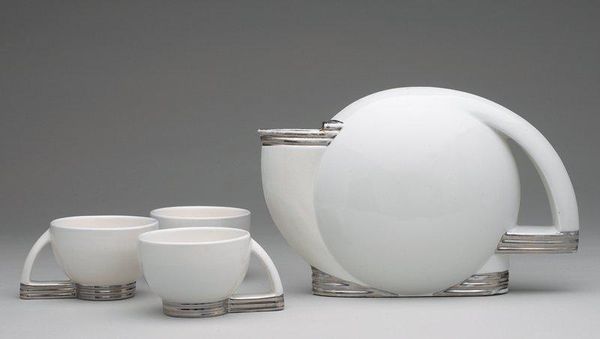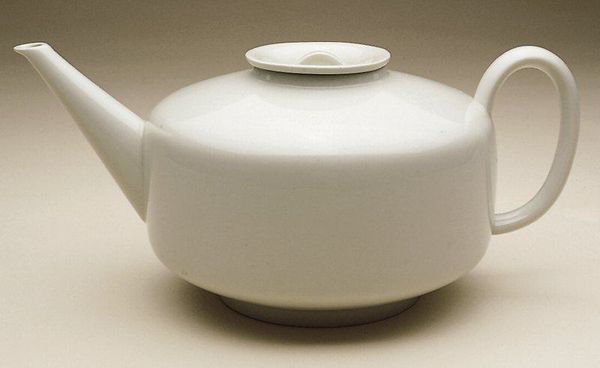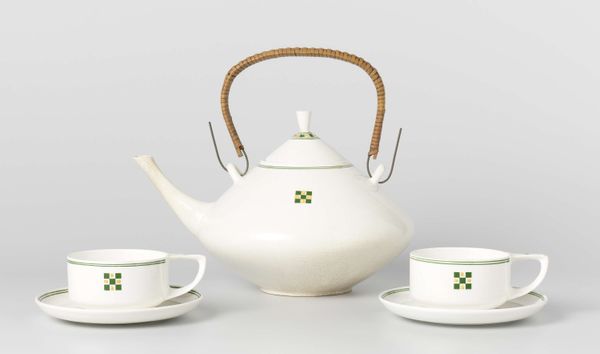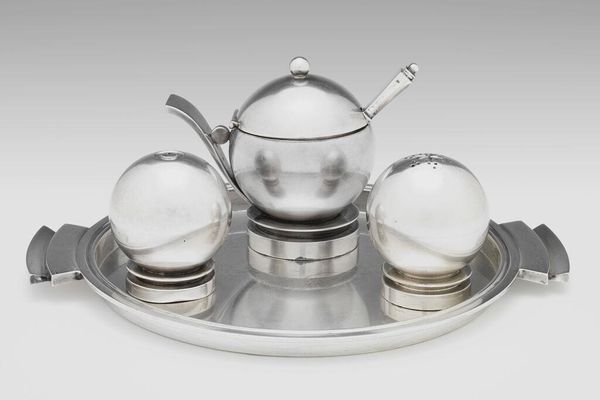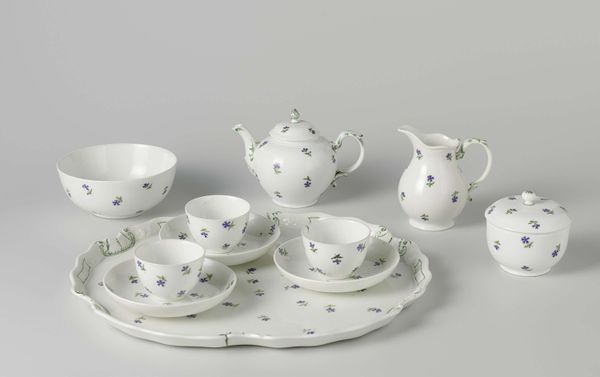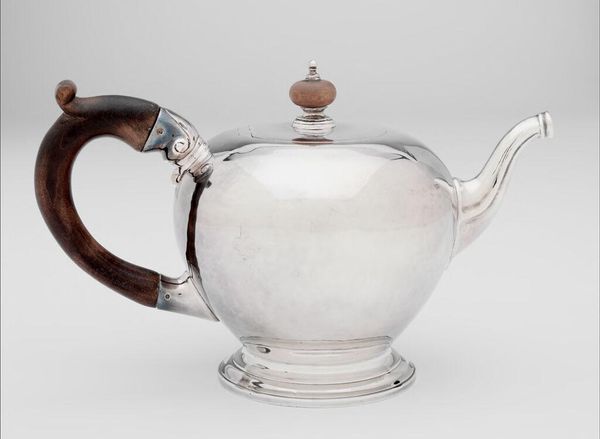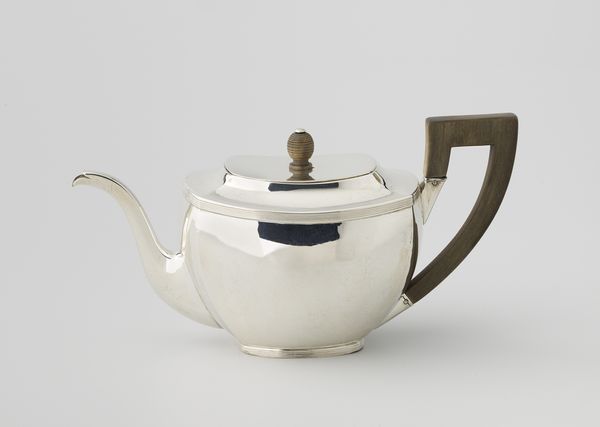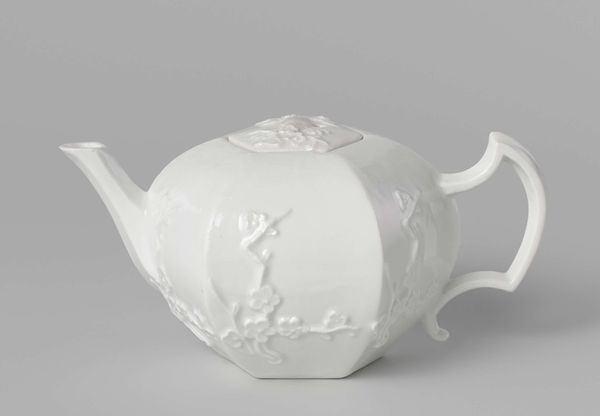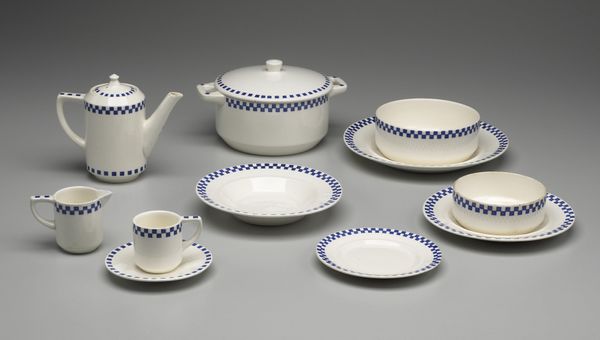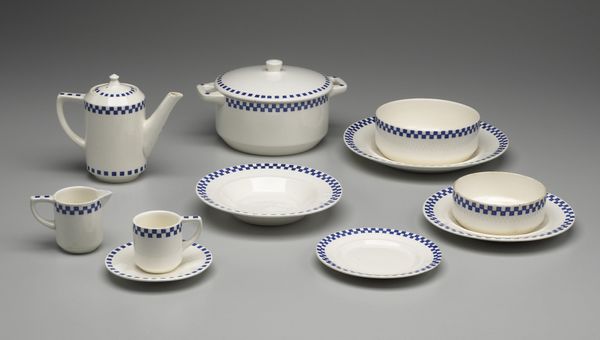
ceramic
#
art-deco
#
ceramic
#
ceramic
#
united-states
#
decorative-art
Copyright: No Known Copyright
Curator: Here we have a ceramic “Cup” by Paul Schreckengost, created around 1938. You can find this beautiful piece right here at the Minneapolis Institute of Art. What are your first thoughts? Editor: It feels… strangely futuristic, but also restrained. The white ceramic is so pristine, almost sterile, yet those silver accents hint at luxury. It has a very interesting interplay of form, mainly circles, cut across with some bold straight lines on the handles. Curator: Absolutely. Schreckengost was deeply involved in the Art Deco movement. The streamlining, the geometric forms – they speak of a modern era trying to reinvent itself, while the material roots it in an almost primal, handcrafted world. Editor: Right, it evokes the streamlined trains and architecture of the 1930s, a moment when industrial design aspired to be art. The circle – repeated in the pot's body, handle, and in the cups themselves—traditionally represents wholeness. Maybe the maker hoped for this piece to promote a sense of harmony, which, during the late 30s, pre-WWII, might suggest more than a peaceful coffee break. Curator: I see your point. Consider the ritual of sharing tea or coffee, deeply rooted in social custom across cultures. Placing such familiar rituals inside this Art Deco vocabulary creates an intriguing dialogue between aspiration, cultural memory, and even technological progress. Each element – from the severe silver lines to the warm curve of the ceramic form– creates an icon of function meeting futurism. Editor: What an exquisite exercise in seeing! From a formal point of view, thinking through its structure and symbolic echoes reveals an amazing snapshot of both optimism and underlying unease through familiar daily objects.
Comments
No comments
Be the first to comment and join the conversation on the ultimate creative platform.
